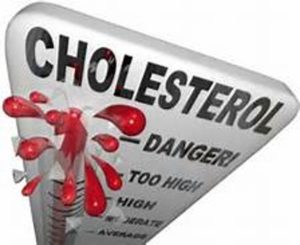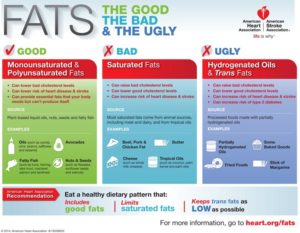
Cholesterol
What is Cholesterol?
A waxy, fat-like substance that’s found in all cells of the body.
We need to…
●Make hormones
●Vitamin D
●Digest food
●Human body makes it.
●Found in food
Your Cholesterol Numbers…
Total cholesterol is below 200
Triglycerides is below 150
HDL should be higher than 50
And under 35 is risky
LDL should be below 130
High Risk = above 240 with triglycerides higher than 500
L ipoproteins- made of fat on the inside and proteins on the outside
ipoproteins- made of fat on the inside and proteins on the outside
Low density lipoproteins (LDL) is bad proteins that build up cholesterol in the arteries. LDL carries cholesterol from the heart to the body
High Density Lipoproteins (HDL) is good cholesterol that carries cholesterol from the body to the liver to be digested and removed.
Lifestyle
There are small simple changes that you could implement in your everyday activities that could help improve your lipid profile.
High Stress
Lack of exercise
Smoking
Lack of Sleep
Making positive changes in your lifestyle by eliminating these unhealthy habits could improve your lipid profile.
Exercise
Exercise is an important ingredient to your lifestyle.
It strengthens bones and muscles
Aids in weight loss
Sense of well-being.
Heart healthy
Exercise has also been proven to modestly lower LDL cholesterol.
Boost your “good”, or HDL cholesterol.
F ood Intake
ood Intake
A diet that is high in saturated fat, trans fat, and refined sugars can all adversely affect your levels by causing your LDL cholesterol levels to increase and your HDL cholesterol levels to decrease.
American Heart Association Guidelines
Eating between 25 and 35 percent of your total daily calories as fats from foods like fish, nuts, and vegetable oils.
Limiting the amount of saturated fats you eat to less than 7 percent of your total daily calories. That means if you need about 2,000 calories a day, less than 140 calories (or 16 grams) should come from saturated fats.
Limiting the amount of trans fats to less than 1 percent of your total daily calories. That means if you need about 2,000 calories a day, less than 20 calories (or 2 grams) should come from trans fats.
For good health, the majority of fats you eat should be monounsaturated or polyunsaturated.
The American Heart Association recommends that adults who would benefit from lowering LDL cholesterol reduce their intake of trans fat and limit their consumption of saturated fat to 5 to 6% of total calories. Here are some ways to achieve that:
Eat a dietary pattern that emphasizes fruits, vegetables, whole grains, low-fat dairy products, poultry, fish and nuts. Also limit red meat and sugary foods and beverages.
Use naturally occurring, unhydrogenated vegetable oils such as canola, safflower, sunflower or olive oil most often.
Look for processed foods made with unhydrogenated oil rather than partially hydrogenated or hydrogenated vegetable oils or saturated fat.
Use soft margarine as a substitute for butter, and choose soft margarines (liquid or tub varieties) over harder stick forms. Look for “0 g trans fat” on the Nutrition Facts label.
Doughnuts, cookies, crackers, muffins, pies and cakes are examples of foods that are high in trans fat. Don’t eat them often.
Limit commercially fried foods and baked goods made with shortening or partially hydrogenated vegetable oils. Not only are these foods very high in fat, but that fat is also likely to be trans fat.
Limit fried fast food. Commercial shortening and deep-frying fats continue to be made by hydrogenation and contain saturated fat and trans fat.

